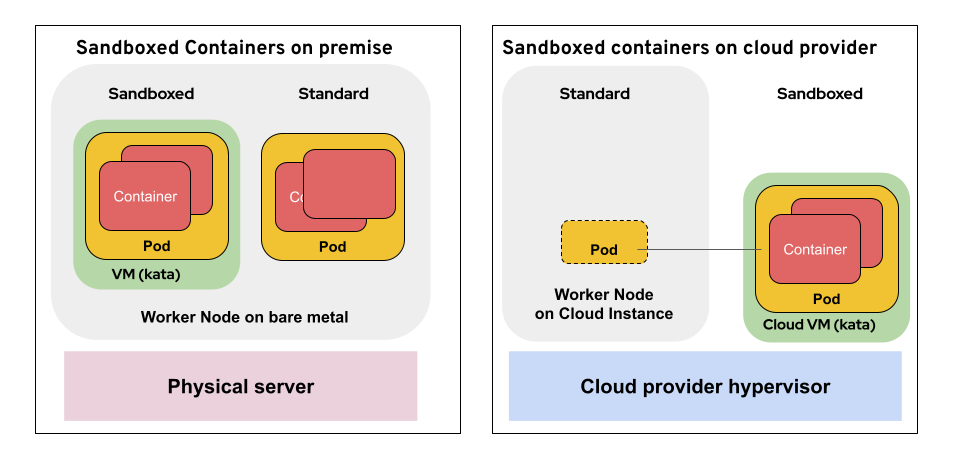- architecture: amd64
hyperthreading: Enabled
name: worker
platform:
azure:
type: Standard_D8s_v5
replicas: 3Azure requirements
This demo currently has been tested only on azure.
The configuration tested used the openshift-install.
OpenShift documentation contains details on how to do this.
The documentation outlines minimum required configuration for an azure account.
Changes required
Do not accept default sizes for OpenShift install. It is recommended to up the workers to at least Standard_D8s_v5.
This can be done by using openshift-install create install-config first and adjusting the workers under platform e.g.:
On a cloud provider the virtual machines for the kata containers use "peer pods" which are running directly on the cloud provider’s hypervisor (see the diagram below).
This means that access is required to the "confidential computing" virtual machine class. On Azure the Standard_DCas_v5 class of virtual machines are used.
These virtual machines are NOT available in all regions. Users will also need to up the specific limits for Standard_DC2as_v5 virtual machines.

DNS for the openshift cluster also MUST be provided by azure DNS.
Azure configuration required for the validated pattern
The validated pattern requires access to azure apis to provision peer-pod VMs and to obtain certificates from let’s encrypt.
Azure configuration information must be provided in two places:
The a secret must be loaded using a ../../../learn/secrets-management-in-the-validated-patterns-framework/[values-secret] file. The
values-secret.yaml.templatefile provides the appropriate structureA broader set of information about the cluster is required in
values-global.yaml(see below).
global:
azure:
clientID: '' # Service principle ID
subscriptionID: ''
tenantID: '' # Tenant ID
DNSResGroup: '' # Resource group for the azure DNS hosted zone
hostedZoneName: '' # the hosted zone name
clusterResGroup: '' # Resource group of the cluster
clusterSubnet: '' # subnet of the cluster
clusterNSG: '' # network security group of the worker nodes in the cluster
clusterRegion: ''